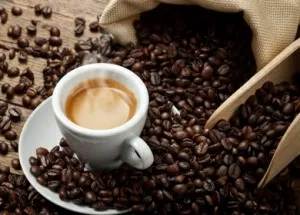Do you love the aroma of coffee? Do you crave that cup of “joe” in the morning just to get you up and moving? According to the National Coffee Association, more than 83% of Americans acknowledged that they drank coffee last year.
Research has uncovered some reasons why drinking coffee may be an excellent addition to a healthy living plan. Here is what has been found:
- Coffee improves brain function and mood.
- The caffeine in coffee raises the metabolic rate, enhances physical performance and mobilizes fatty acids from fat tissues.
- Drinking two or three cups of coffee per day has been linked to a lower risk of type 2 diabetes.
- Coffee contains vitamins, minerals and antioxidants.
- Drinking coffee daily has been linked to a lower risk of developing neurological disorders such as Alzheimer’s and Parkinson’s.
- Coffee may protect your liver. Drinking coffee on a regular basis lowers your risk of liver cancer by 40% and cirrhosis by 80%.
If you are confused about what coffee labels really mean, or how to best prepare coffee, we want to help you make the best decision possible when it comes to your morning boost!
USDA Certified Organic Coffee
According to the United States Department of Agriculture, there are several requirements for a coffee farm to be certified as organic:
- No synthetic pesticides or prohibited substances have been used in the last three years
- Pest prevention must be natural
- The farm must rotate crops to ensure sustainability and minimize nutrient loss from the soil
- The coffee must pass inspection and testing
Bird-Friendly Label
Organic farmers who share their coffee beans by trees instead of screens or buildings can apply for a bird-friendly label.
Like organic foods, organic coffee is grown without the use of harsh chemicals. Farmers use natural fertilizer, pesticides and soil amendments to produce a chemical-free coffee. Organic coffee is also easier on the environment, and promotes soil diversity and sustainability.
Fair Trade Coffee
Goods that are certified “Fair” ensure that farmers and workers are compensated fairly for their labor and product. Fair Trade products help farmers in developing countries establish sustainable businesses that have a positive influence on their communities.
Fair Trade USA teaches disadvantaged communities how to use the free market to their advantage. When you purchase Fair Trade coffee, you are helping people become independent and empowering small farmers.
Preparing Coffee
There are a number of different ways to make coffee. In the end, most coffee is made using one of these four methods:
Boiling: Boiling coffee involves submerging coffee grounds in water and heating the water to the boiling point. Boiling coffee heats the ground above the optimal brewing temperature and creates a bitter taste.
Pressure: Hot water is forced through the coffee grounds with a very strong force. Espresso is a popular example of this brewing method. Espresso coffee is a small 1 or 2 ounce shot of pressure-brewed coffee that uses about 1 tablespoon of ground coffee. Brewing takes about 30 seconds. Many people work for years to learn how to make the perfect shot of espresso. Any type of coffee bean can be used to make espresso.
Steeping: The French Press is the most common example of steeping coffee. Water is poured on coffee grounds and left to steep for a while. Many people say that this method produces the most flavorful coffee.
Filtering: The most popular method of preparing coffee in America is filtering. The standard kitchen coffee machine uses this method. Coffee is placed in a filter and water is pumped over the coffee, draining to a pot below.
Creative Coffee Making

Single Serve Machines: Use individual pods of coffee. This method can be quite expensive. Watch the labels of flavored coffees for artificial ingredients.
Espresso Machine: As noted above, many people make espresso as a hobby. Espresso coffee is sometimes served with sugar – watch for this – and often with cream. Try coconut crystals instead and stick to organic, whole-fat cream. You could pay over $1,000 for a good machine.
French Press: Although this machine produces a particularly rich-tasting coffee, some people don’t like the little bit of sediment that may settle in the bottom of the cup.
Percolator: Unless you want your coffee to taste bitter, avoid this machine. A favorite at one time, percolating coffee has lost much of its charm.
Sock: This is not your ordinary sock. A special sock filter covers a wire basket. Coffee grounds are placed in the sock and water is poured on top of them, After steeping for a few minutes, the sock is removed. This is definitely one of the strangest ways to brew coffee we have found.
Turkish Pot: This produces a remarkably strong drink that takes some getting used to. Coffee is first ground by hand and then placed in a pot called an ibrik with some sugar and water. It is boiled three times and poured into a cup.
Cold Brew: People who live in warm climates let ground coffee steep in cold water for 12 hours. The result is a tasty beverage that is used to make iced coffees and other summer treats. Just watch your additives.
-The Alternative Daily
Sources:
http://www.ncausa.org/i4a/pages/index.cfm?pageid=731
http://lifehacker.com/5986506/the-science-behind-coffee-and-why-its-actually-good-for-your-health
http://whatscookingamerica.net/Beverage/OrganicCoffee.htm
